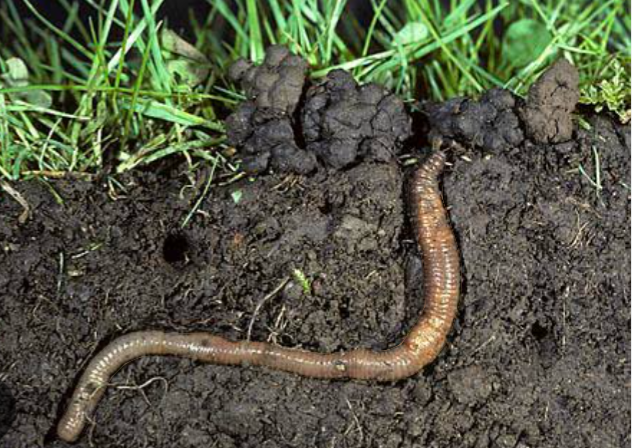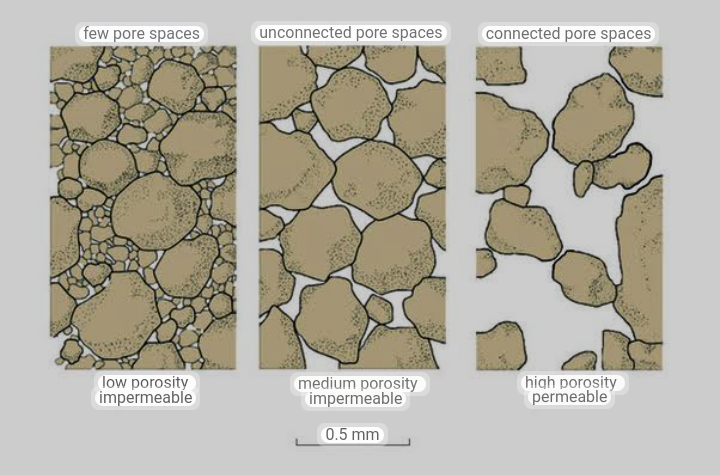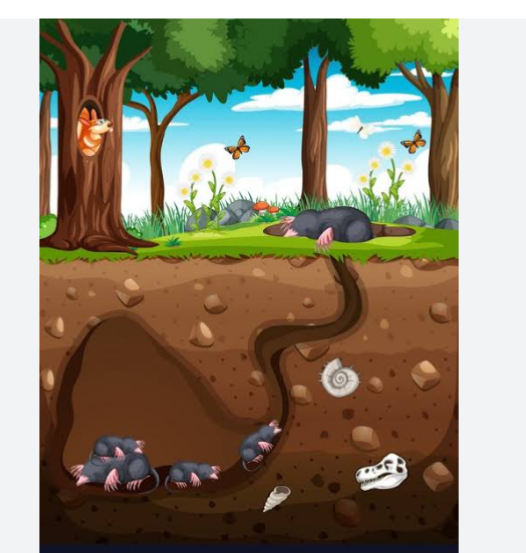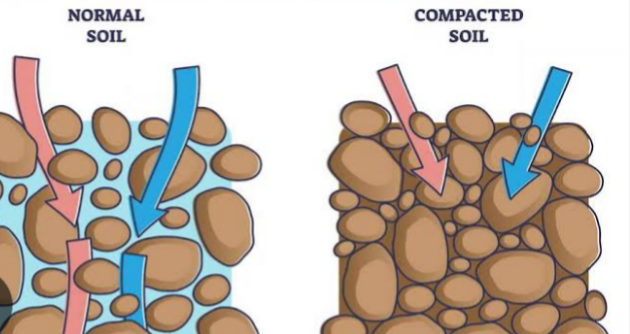
The soil is composed of minerals, organic matter, air and water. The parent material which is a soil forming factor is composed of the minerals or organic matter of both which are the solid phase of the soil. The minerals which are soil particles are cemented together by various cementing agents from various sources, such as Organic matter, fungi hyphae, which extend into the soil and tie soil particles together, excrement like sugars from plant Roots, Oxides also act as glue, and electrostatic forces existing among soil particles. When these particles are cemented together, little spaces are still formed between them. These spaces are called pores.
The pore space of soil contains the liquid and gas phases of soil, that is, everything excluding the solid phase that contains mainly minerals of varying sizes as well as organic compounds.
WHAT IS SOIL POROSITY?
This is the amount of pore spaces within a soil and is primarily influenced by the structure of the soil. It can also be defined as the ratio of nonsolid volume to the total volume of soil.

Porosity is a very complex and dynamic soil attribute that has both a textural and a structural component. Textural porosity is a function of mineral particle size, whereas structural porosity is formed by either physical (For example, creation of cracks in drying soil) or biological processes, such as bioturbation and burrowing. The biological process allows vertical and horizontal water flows and plant provisioning.
Saturated hydraulic conductivity of soil is a function of pore size; coarse-textured soils have larger pores and higher saturated conductivity than fine-textured soils which have smaller pores.
The degree of the increase of the porosity depended significantly on production process and particle size. Therefore, amount of porosity in a soil depends on the minerals that make up the soil and on the amount of sorting occurring within the soil structure. For example, a sandy soil will have a larger porosity than a silty and clayey sandy soil, because the silt and clay particles are so small that they will fill the gaps in between the sand particles.
Porosity determines the depth to which air and water penetrate the soil. Low porosity and waterlogged soils might result in inadequate aeration and negatively affect plant growth, root activity, soil biodiversity, and trace gas flux.

TYPES OF SOIL PORES
Most times, people only classify soil porosity into two types which are the macropores and the micropores. They are the air-Filled Porosity and water-Filled Porosity respectively. But there are other pores which include: Mesopore, Ultramicropore, and Cryptopore.
a. MACROPORE :These are the large pores with Size >75 μm and diameter range of > 50-75µm (0.05 – 0.075mm) . They are too large to have any significant capillary force. Unless impeded, water will drain from these pores. They are the air-filled pores at field capacity. Macropores can be caused by cracking, division of peds and aggregates, as well as plant roots, and zoological exploration.
b. MESOPORE : They are also called storage pores because of the ability to store water useful to plants. They are also large pores but not as large as the macropores. Their size range between 30–75 μm. They are usually filled with water at field capacity. They do not have high capillary forces that makes water not to become limiting to the plants. They have high impact on agriculture and irrigation.
c. MICROPORE : They are small pore with Size ranging between 5–30 μm. They are small to the extent that water within them are immobile, but available for plant extraction. Because there is little movement of water in these pores, solute movement is mainly by the process of diffusion.
d. ULTRAMICROPORE : These are very small pores with size range between 0.1–5 μm. These pores are habitated by microorganisms. Their distribution is determined by soil texture and soil organic matter, and they are not greatly affected by compaction.
e. CRYPTOPORE : These are the smallest of all pores with Size <0.1 μm. They are too small to be penetrated by most microorganisms. Organic matter in these pores are protected from microbial decomposition. They are filled with water unless the soil is very dry, but little of this water is available to plants, and water movement is very slow.
HOW TO CALCULATE SOIL POROSITY
The formular for calculating soil porosity is as follow:
SOIL POROSITY = ( 1 – (Bulk Density ÷ Particle Density) ) x 100.
This will indicate the percentage of the soil that contains pores.
FOR EXAMPLE:
If a sandy soil has organic matter content of 10%, with bulk density of 2 g cm-3, and an average particle density of 3.255 g cm-3 then the soil porosity is as follows:
( 1 – ( 2 ÷ 3.255) ) x 100 =
(1 – (0.614) ) x 100 = 60.4%.
Therefore, to know the percentage of the solid phase, subtract 60.4% porosity from 100% soil composition
100% – 60.4%= 39.6%
This means that the remaining 39.6% is the solid material of the soil itself.
IMPORTANCE OF SOIL POROSITY
1. Soil porosity is important in the conduction of water, air, and nutrients into the soil
2. Soil porosity provides space for microbial growth and improves the aeration of the soil, nutrient availability, and water drainage and retention capacity
3. These pores influence soil biodiversity (i.e., soil microorganisms) by facilitating space for their survival. For instance, protozoa, small nematodes, and fungi inhabit the pore space between micro-aggregates while bacteria colonize within the pores of micro-aggregates for their habitat
4. Soil organic carbon derived from microorganisms within soils pores is bound and stabilized with aggregates, thereby affecting soil carbon sequestration.
5. When water infiltrates into the soil, it is either stored for later use by plants or released to recharge aquifers. Soil water status and the balance among these important functions are made possible by soil porosity and the effect of gravity
6. Soil porosity determines how heat can be stored and transmitted within the soil matrix.
7. Soil porosity is critical in determining the rate at which water can infiltrate into soil and carry nutrients away from the soils. Small pores can retain soil solution by capillarity, reducing leaching.
SOIL PROPERTIES INFLUENCED BY SOIL POROSITY
The porosity and pore size distribution in the soil directly influence the various soil hydraulic properties such as hydraulic conductivity, water retention, infiltration, and available water capacity. It also influence a range of soil indices including soil aeration capacity, plant available water capacity, and relative field capacity. It is reported that changes in temperature affect soil porosity and the interactive surface between liquid and solid, especially in heavy loam with high clay soils. The soil’s biological activity and plant root growth depend upon the soil porosity characteristics and warm climate. Thus, the altered soil porosity and pore size distribution under a warming climate may affect different hydraulic properties.
FACTORS THAT INCREASES SOIL POROSITY

1. Primary and secondary tillage operations pulverize the soil, break clods and loosen the soil, and often result to increased soil macropores and total porosity.
2. Mulch addition increased the total porosity in more compacted soil under reduced tillage
3. No-tillage leads to increasing microporosity (100–500 µm) as well as the connectivity of pores . Bio-tillage is believed to improve soil structure and porosity
4. Nano particles in soils can increase flocculation and microporosity, NPs rich soils such as allophane and imogolite have low bulk density due to the high microporosity
5. Plant roots also increase porosity after harvest

TERMINOLOGIES
-HYDRAULIC CONDUCTIVITY : Hydraulic conductivity (K) is a property of soil that describes the ease with which water can move through pore spaces.
– INFILTRATION : Infiltration is the process by which water on the ground surface enters the soil. The water enters the soil through the pores by the forces of gravity and capillary action.
–FLOCCULATION : The process by which individual particles of clay aggregate break into clotlike masses or precipitate into small lumps. Flocculation occurs as a result of a chemical reaction between the clay particles and another substance, usually salt water.
–BULK DENSITY: Bulk density is the weight of soil in a given volume. Soils with a bulk density higher than 1.6 g/cm3 tend to restrict root growth. Bulk density increases with compaction and tends to increase with depth. Sandy soils are more prone to high bulk density.
